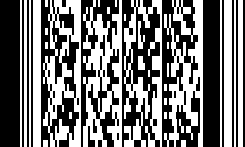|
BOB SIMONSON, Program Leader
BARCODE TECHNOLOGY George Broyles, Forestry Technician |
||

San Dimas Technology
& Development Center
444 E Bonita Ave
San Dimas, CA 91773
(909) 599-1267
WHAT IS A BARCODE?
Barcodes are popularly used in applications that involve monitoring inventory, such as monitoring the sales of products in a supermarket. A barcode is simply a symbol that is encoded with information, text or numerical, that is in a particular format that a barcode laser can read. There are two main types of barcode formats: One Dimensional (1D) barcodes and Two Dimensional (2D) barcodes.
1D barcodes are commonly seen on retail products. 1D barcodes are seen as a series of thick and thin vertical lines on a contrasting background (usually black lines on a white background.) These lines usually represent a serial or identification number that is tied to more information on a computer. There are different types of 1D barcode symbology, such as UPC, EAN, Code 128, and Code 39. Each symbology offers its own benefits. Required distance to scan and barcode size requirements are important factors when determining which barcode symbology to use. More information on the different types of symbologies can be seen at the following website:
2D barcodes have information encoded on a series of both vertical and horizontal lines on a contrasting background. The difference between 2D and 1D barcodes are that 2D barcodes can be encoded with much more information. 2D barcodes have the ability to encode 255 characters. The most used 2D barcode symbology used is the PDF417. All 2D barcodes (PDF417) need a special laser scanner to read.
|



